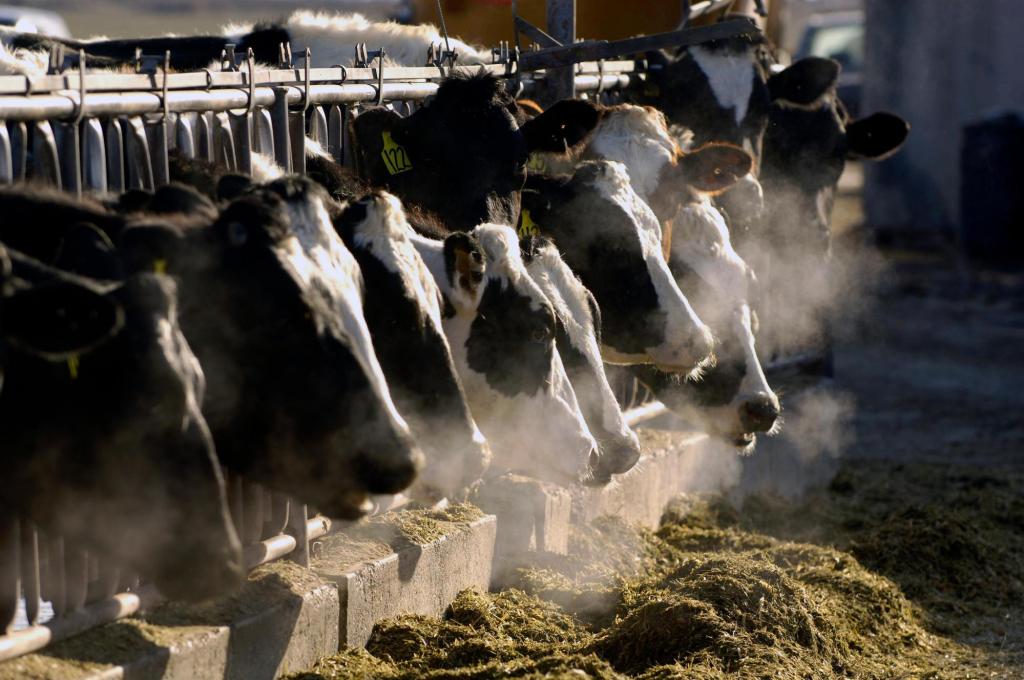Colorado’s outbreak of avian flu in poultry and dairy cattle seems to have died down, though the state continues to monitor farms for signs of the virus.
That doesn’t include regularly testing farms’ workers though — unless they have symptoms and their employers have a known outbreak.
Dairies have to bulk-test their milk at least once a week for H5N1, a flu virus that is particularly lethal to poultry and spilled over to cattle earlier this year. Poultry farms that had to cull their animals because of infections also must test as they introduce new birds, in case they missed something while disinfecting.
Surveillance of people is far less regular, though.
The Colorado Department of Public Health and Environment only monitors workers on farms with known outbreaks, and only tests those who show symptoms, which is in line with guidance from the Centers for Disease Control and Prevention. The department hasn’t reported any new human testing since at least the start of September. At that point, 137 people had taken tests and 10 came back positive since 2022.
The health department also routinely tests wastewater for unusual spikes in flu, and asks local labs to send samples of the influenza family that includes H5N1, so it can find out if that particular strain is spreading, spokeswoman Kristin Richmann said.
“Since there is a substantial decrease in newly affected farms in Colorado, no active outbreaks among birds at poultry facilities and no affected dairies with symptomatic workers, a need for testing has not been indicated recently. We will continue to test and treat symptomatic workers for avian flu as we identify them,” she said.
The state also offers a month’s worth of free protective equipment to farms, but has received only 36 orders so far.
Since March, when it became clear that H5N1 was spreading in cattle, at least 4,800 people exposed to infected animals nationwide have undergone monitoring for symptoms, and 240 have been tested, according to the CDC.
Fourteen of those tests came back positive, including nine people who worked with infected poultry, four who worked with cows and one person in Missouri who reported no contact with cattle, poultry, or raw milk.
The Missouri patient spent time in a hospital but has since recovered, and the CDC isn’t sure how they got the virus. None of the other people who tested positive needed hospital care. Small studies of farmworkers suggest that infections have gone undetected, and no one knows if people can get and possibly spread the virus without symptoms.
The most recent state report, from Sept. 6, showed backyard poultry operations in Morgan and Larimer counties still were under 120-day quarantines. As of Tuesday, 13 dairies in the state also were quarantined, either because they had visibly sick cattle or because their milk samples tested positive for H5N1.
In July, Colorado state veterinarian Dr. Maggie Baldwin ordered commercial dairies to submit milk samples for batch testing. The order doesn’t include raw milk operations, which the state doesn’t regulate, though it encourages them to test voluntarily, she said.
Pasteurization, which involves heating milk to temperatures that kill viruses and bacteria, eliminates the risk of H5N1 from eating or drinking dairy products.
At that point, the virus had spilled over to three poultry operations in Weld County, which had to cull a combined 3.3 million chickens. The Colorado Department of Agriculture declared those outbreaks over in late August. Workers could have carried the virus on their clothes or used equipment contaminated at the dairies, but no one is certain how the spillovers happened, Baldwin said.
“We don’t have a smoking gun,” she said.
Colorado had two clusters of human cases in July at the poultry facilities. Neither the state health department nor the CDC specified which facilities had outbreaks, but they did report nine people who helped kill and dispose of infected birds had symptoms and tested positive.
All of the patients reported eye inflammation, and six said they ran a fever or had chills, with smaller numbers reporting other flu-like symptoms, such as sore throats and coughing. All received antiviral medication and recovered.
The U.S. Department of Agriculture also tested “peri-domestic” species that live near people, such as mice and rats, in the farms with outbreaks, but got relatively few hits, Baldwin said. The virus showed up in four domestic cats, a wild rabbit, a prairie vole and 22 mice in Weld and Larimer counties. Experts don’t yet know if those animals could spread the virus to livestock or people.
So far, six cats have gotten the virus in Colorado, including two indoor cats, Baldwin said. The other four that tested positive in the state either had a connection to an infected farm or hunted small animals outside, according to the Colorado Veterinary Medical Association.
The combination of required and voluntary testing is enough to give Colorado a clear view of how the virus is spreading in animals, Baldwin said.
“We feel pretty confident and comfortable that we are getting a pulse,” she said.
Sign up for our weekly newsletter to get health news sent straight to your inbox.
Originally Published:
